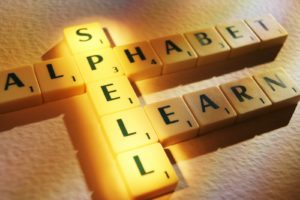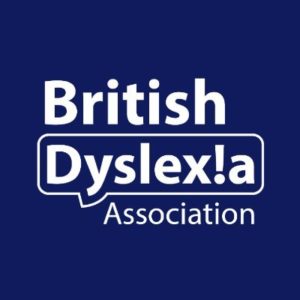Signs of dyslexia (Primary school age)
If a child appears to be struggling with spelling, reading, writing or numeracy, how do you know whether these difficulties are potential indications of dyslexia?
There are some obvious signs such as a ‘spiky’ profile which means that a child has areas of strong ability alongside areas of weakness. You may also have other family members with similar weaknesses. Remember that not all dyslexic children will display the same weaknesses and abilities.
General signs to look for are:
- Speed of processing: slow spoken and/or written language
- Poor concentration
- Difficulty following instructions
- Forgetting words
Written work
- Poor standard of written work compared with oral ability
- Produces messy work with many crossings out and words tried several times, e.g. wippe, wype, wiep, wipe
- Confused by letters which look similar, particularly b/d, p/g, p/q, n/u, m/w
- Poor handwriting with many ‘reversals’ and badly formed letters
- Spells a word several different ways in one piece of writing
- Makes anagrams of words, e.g. tired for tried, bread for beard
- Produces badly set-out written work, doesn’t stay close to the margin
- Poor pencil grip
- Produces phonetic and bizarre spelling: not age/ability appropriate
- Uses unusual sequencing of letters or words
Reading
- Slow reading progress
- Finds it difficult to blend letters together
- Has difficulty in establishing syllable division or knowing the beginnings and endings of words
- Unusual pronunciation of words
- No expression in reading, and poor comprehension
- Hesitant and laboured reading, especially when reading aloud
- Misses out words when reading, or adds extra words
- Fails to recognise familiar words
- Loses the point of a story being read or written
- Has difficulty in picking out the most important points from a passage
Numeracy
- Confusion with place value e.g. units, tens, hundreds
- Confused by symbols such as + and x signs
- Difficulty remembering anything in a sequential order, e.g. tables, days of the week, the alphabet
Time
- Has difficulty learning to tell the time
- Poor time keeping
- Poor personal organisation
- Difficulty remembering what day of the week it is, their birth date, seasons of the year, months of the year
- Difficulty with concepts – yesterday, today, tomorrow
Skills
- Poor motor skills, leading to weaknesses in speed, control and accuracy of the pencil
- Limited understanding of non verbal communication
- Confused by the difference between left and right, up and down, east and west
- Indeterminate hand preference
- Performs unevenly from day to day
Behaviour
- Uses work avoidance tactics, such as sharpening pencils and looking for books
- Seems ‘dreamy’, does not seem to listen
- Easily distracted
- Is the class clown or is disruptive or withdrawn
- Is excessively tired due to amount of concentration and effort required
Signs of dyslexia (Secondary school age)
Written work
- Has a poor standard of written work compared with oral ability
- Has poor handwriting with badly formed letters or has neat handwriting, but writes very slowly
- Produces badly set out or messy written work, with spellings crossed out several times
- Spells the same word differently in one piece of work
- Has difficulty with punctuation and/or grammar
- Confuses upper and lower case letters
- Writes a great deal but ‘loses the thread’
- Writes very little, but to the point
- Has difficulty taking notes in lessons
- Has difficulty with organisation of homework
- Finds tasks difficult to complete on time
- Appears to know more than they can commit to paper
Reading
- Is hesitant and laboured, especially when reading aloud
- Omits, repeats or adds extra words
- Reads at a reasonable rate, but has a low level of comprehension
- Fails to recognise familiar words
- Misses a line or repeats the same line twice
- Loses their place easily/uses a finger or marker to keep the place
- Has difficulty in pin-pointing the main idea in a passage
- Has difficulty using dictionaries, directories, encyclopaedias
Numeracy
- Has difficulty remembering tables and/or basic number sets
- Finds sequencing problematic
- Confuses signs such as x for +
- Can think at a high level in mathematics, but needs a calculator for simple calculations
- Misreads questions that include words
- Finds mental arithmetic at speed very difficult
- Finds memorising formulae difficult
Other areas
- Confuses direction – left/right
- Has difficulty in learning foreign languages
- Has indeterminate hand preference
- Has difficulty in finding the name for an object
- Has clear difficulties processing information at speed
- Misunderstands complicated questions
- Finds holding a list of instructions in memory difficult, although can perform all tasks when told individually
Behaviour
- Is disorganised or forgetful e.g. over sports equipment, lessons, homework, appointments
- Is immature and/or clumsy
- Has difficulty relating to others; is unable to ‘read’ body language
- Is often in the wrong place at the wrong time
- Is excessively tired, due to the amount of concentration and effort required
A cluster of these indicators alongside areas of ability may point to possible dyslexia and further investigation is recommended.
Dyslexia explained in a five minute video.
What is Dyslexia explained – click here

Further Information to support schools and parents with understanding the nature of dyslexia
Understanding Dyslexia and Literacy difficulties – click here

